Species
Flies can regularly be found in homes and businesses across India. Some species are more common than others and are attracted to different environments suited to their natural habits and lifecycle. Knowing about the size, habits, seasonality and lifecycle of different fly species, can help to identify the most effective fly control methods.
FACT: On average, the adult housefly will live for around 30 days. They go through a complete four-stage cycle that consists of egg, larva, pupa and adult stages.
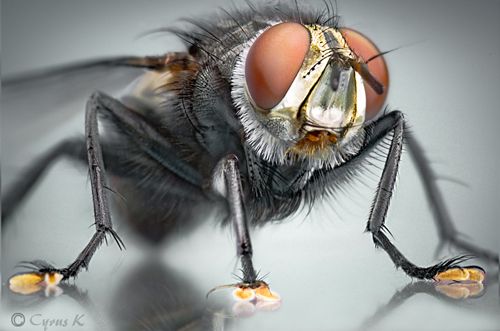
Do you think you have flies?
Don't waste time, book a treatment now with one of our experts.
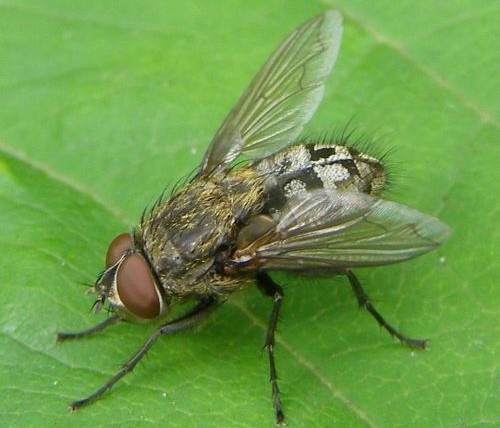
House Fly
(Musca domestica)
House flies are major carriers of disease and can infest all types of premises. They are attracted to all types of food, including human food, pet food, animal feed, food waste and even faeces. Seeing adult flies is usually the most common sign of activity and a potential problem. Larvae may also be seen as they crawl out of breeding material to pupate.
- Adult is 5–8mm in length.
- Grey thorax with 4 narrow stripes.
- Buff or yellow abdomen.
- Covered with small hairs that serve as taste organs.
- Complex compound eyes – with thousands of lenses allows them a wide field of vision.
- 4th wing vein bent and wing tips slightly pointed.
- Larva is white and tapers to a point at the head end. There are 2 spiracle “spots” at the hind end, is legless and 12 mm in length when mature.
- House flies are able to quickly mature from an egg to an adult. They breed in moist decaying vegetable matter eg. in uncovered dustbin or pet food.
- Eggs are laid in batches of 120 to 150 and can hatch in 8 – 72 hours.
- The larvae of House Flies can take 3 – 60 days to mature.
- Pupae matures in 3 – 28 days.
- Once indoors, house flies can be found resting on walls, floors or ceilings. Outdoors they can be seen on plants, the ground, fences, compost heaps and rubbish bins.
- At night them they prefer to rest near food sources approx. 5 to 15 feet off the ground.
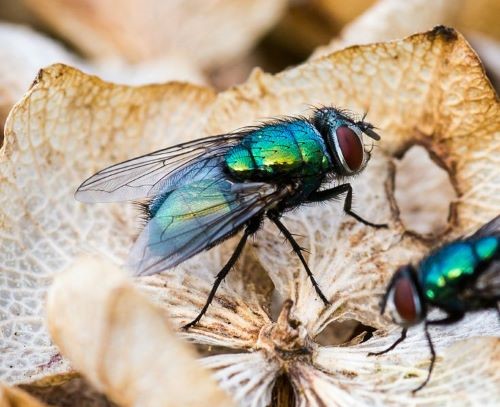
Bluebottle fly
(Calliphora vomitoria)
Bluebottle flies (also known as Blow fly) can often be seen hovering around dustbins. These scavengers are attracted to pet faeces and dead animals and as such are known carriers of disease.
- Adult is 1/4" - 1/2" in length.
- Metallic blue colour.
- Larva — Similar to the house fly larva in all respects except size. 3/4" when mature. They take 7 – 12 days to mature.
- Eggs hatch 0 – 18 hrs (partial development may occur within the female).
- Breeds in mostly meat derived substances, sometimes cheese.
- Common pest of dead rodents/birds etc.
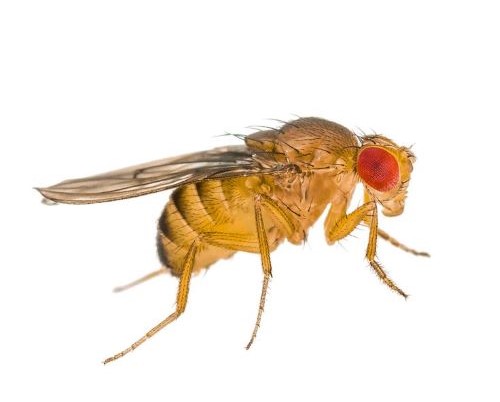
Fruit fly
(Drosophila species)
Fruit flies are commonly found infesting fruit or hovering around fermenting residues found in pubs, fruit orchards & vegetables plots and breweries
- 3mm in length.
- Yellow–brown or mottled in colour.
- Bright red eyes.
- Abdomen hangs down in flight, which is slow.
- Tend to hover.
- They can breed in rotten fruit, unclean drains and even cleaning utensils.
- Develops to adult in 7–30 days.
- Adult lives 2–9 weeks.
- In ideal temperature conditions, fruit flies can complete their development in as little as 1 week.
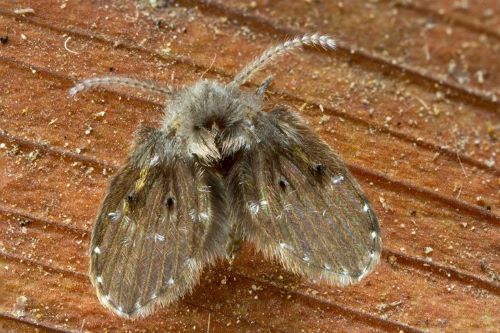
Drain fly
(Psychodidae)
Drain flies are often associated with sewage beds, where larvae feed on sludge–like organic matter. They are also known by a variety of names; drain fly, sewage fly and moth fly are a few examples.
- 2mm in length.
- Tan coloured body appears as grey.
- Wings densely covered in hair and held tent–like over the body when at rest.
- Eggs hatch 1–6 days.
- Larvae 10–50 days to mature.
- Pupae 1–3 days to mature.
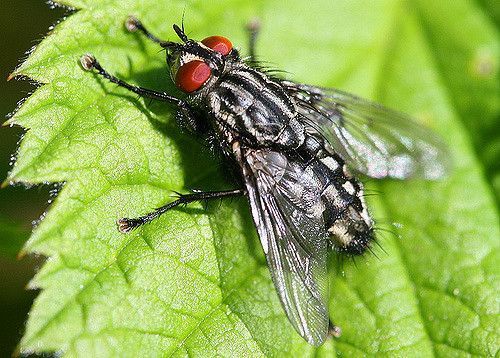
Flesh fly
(Family - Sarcophagidae)
Drain flies are often associated with sewage beds, where larvae feed on sludge–like organic matter. They are also known by a variety of names; drain fly, sewage fly and moth fly are a few examples.
- 6-14mm long.
- Thorax is light grey and has 3 dark longitudinal stripes.
- Abdomen is also light grey, spotted with dark patches to give a checker board appearance.
- Lifecycle lasts for 2-4 weeks.
- The female deposits live larvae on a suitable feeding medium (this can range from spoilt meat or fish, or animal excrement, or in decaying food waste found in garbage bins).
- Larvae feed for a few days, then move away from the feeding medium to pupate in adjacent drier parts.
- They are attracted to decaying wastes, excrement and human foods – making a threat to human health.

